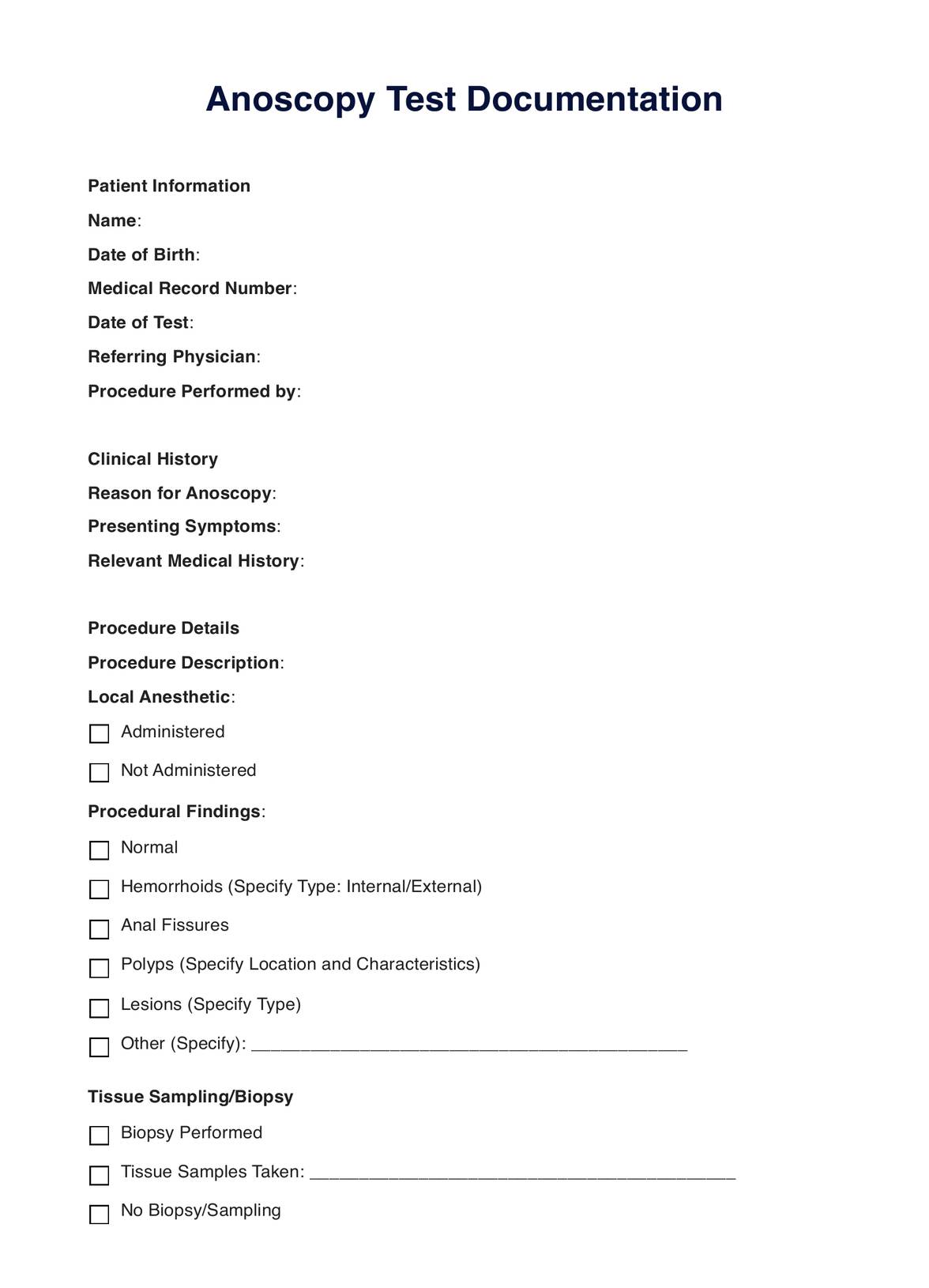Anoscopy Tests are typically requested by healthcare providers, including gastroenterologists, colorectal surgeons, proctologists, and primary care physicians, when patients present with anal or rectal symptoms or as part of colorectal cancer screening.

Anoscopy
Discover everything about anoscopy tests, including the when, why, and how behind this vital medical procedure.
Anoscopy Template
Commonly asked questions
Anoscopy Tests are used when patients experience symptoms like rectal bleeding, anal pain, or discomfort. They are also employed in routine colorectal cancer screening and to diagnose conditions such as hemorrhoids, anal fissures, polyps, and anal warts.
Anoscopy Tests involve the insertion of a thin, flexible anoscope into the anus to visually inspect the anal canal and rectum. The procedure helps healthcare providers diagnose and evaluate conditions affecting these areas, and it may include taking tissue samples or biopsies if necessary.
EHR and practice management software
Get started for free
*No credit card required
Free
$0/usd
Unlimited clients
Telehealth
1GB of storage
Client portal text
Automated billing and online payments











